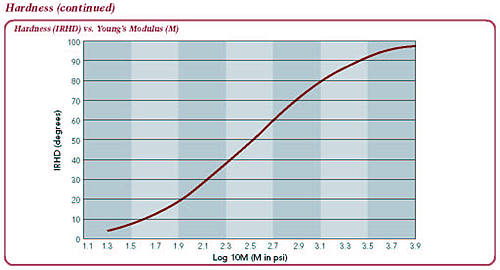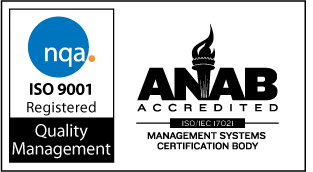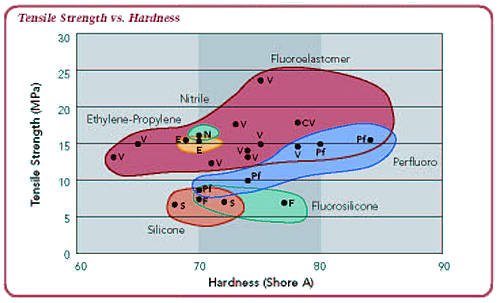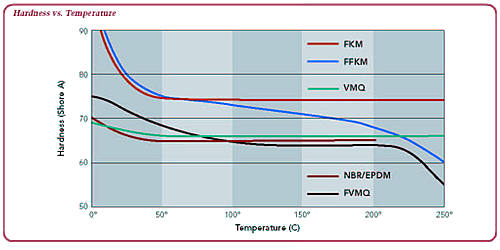
|
7108
S. Alton Way, Unit I |
(303) 758-2728
Home > Elastomer Properties > Hardness
Elastomer Properties - Hardness
The hardness of an elastomer is measured based on the depth of indentation by a standard size and shape impacting gauge. The hardness is obtained by comparing the difference between a small initial force and a much larger final force. The International Rubber Hardness Degrees (IRHD) scale has a range of 0 to 100, corresponding to elastic modulus of 0 (0) and infinite (100), respectively. The measurement is made by indenting a rigid ball into the rubber specimen.
The Shore A scale is the most prevalent in the United States. A “frustoconical” indentor with a spring force that decreases with increasing indentation is used. The readings range from 30 to 95 points. Harder elastomers use a pointed conical indentor with the Shore D scale. The results of the Shore A scale and the IRHD scale are approximately equal over the same range of resiliency. In elastomers with unusually high rates of stress relaxation or deformation hysteresis, the difference in dwell time in the two readings may cause different results. Also, the results of any hardness test depend on the elastomer thickness. Specified thickness should be used when conducting these tests.
Due to the mechanical limits of the test instruments, hardness measurements of elastomers are rarely expressed more precisely than 5 points.
The surface indentation or hardness usually does not bear any relation to the ability of an elastomeric part to function properly. Hardness is a measure of an elastomer’s response to a small surface stress. Stiffness and compressive modulus measure the response to large stresses of the entire elastomeric part.
Test Methods:
ISO 48(IRHD), ISO 7619(Shore A)
ASTM D1415(IRHD), D2240(Shore

Next topic Elastomer Properties - Tensile Stress Relaxation/Retained Sealing Force
We are located in the Denver Technological
Center in a suburb of Denver, Colorado
©1997-2017, Problem Solving Products, Inc.
Website Map | Privacy Statement
| Terms of Use



